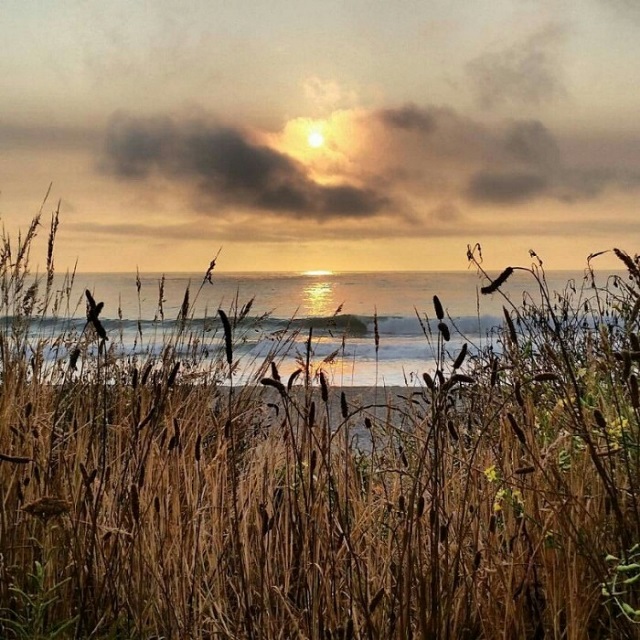Most of us crave travel—the opportunity to take a break from daily life and explore some place new.
I find that travel can also provide time and space for significant self-exploration, especially when we set that intention for ourselves. When I feel the call to go within, I frequently start looking for time to hit the road and get away to the deserts, forests and mountaintops.
These places always help me remember what’s really important in my life and to feel rejuvenated.
Many of us view these getaways or retreats as splurges rather than investments in our happiness and emotional well-being. We tend to need confirmation and outside approval to justify such splurges. And yes! Studies are confirming that experiences like travel bring more lasting joy than objects do. I would add that travel can be a profound contribution to a mindfulness and self-awareness practice.
Here are four elements of mindful travel that I hope will help you justify your next trip and hit the road with a fresh perspective:
1. Curiosity is key.
Curiosity is a key factor of mindfulness. In order to experience and appreciate things as they really are, we have to be willing to suspend our preconceived notions and expectations by stepping into beginner’s mind. Travel puts many of us into this state of mind automatically. After all, if we weren’t curious about what a new locale was like, we would probably just stay home. Seeing a new culture or landscape can help our minds flip over into a new perspective which can help us to recognize what we’ve taken too seriously and what we haven’t taken seriously enough. If we bring curiosity to these realizations, we end up in fertile ground for creativity and change-making.
Many of us are inspired to travel by our love for learning about and experiencing new cultures and landscapes. For some of us, that curious observer mindset sticks around for a while even after we’ve returned from a retreat. As we settle back at home, we may be more aware of the mental constructs the people around us are living within, and that we had been living in before we took a much-needed break from our daily lives and ways of thinking. With this freshly rested lens, we can more easily apply curiosity to our daily home lives. Perhaps we begin to question what had gone un-questioned now that we have participated in other cultures, ideals, and priorities.
And of course, let’s not forget that curiosity can be so much fun! Children are curious and joyful because they are thrilled by the fact that they don’t know everything, rather than discouraged by it. If we take their cue and allow ourselves to be thrilled by all of the newness we experience in travel and in daily life, we can follow them down the path to joy.
2. Travel is more enjoyable when we are non-judgmental.
Resisting the urge to judge things as right, wrong, good or bad is another crucial aspect of mindfulness that plays a role in travel. This ties back into the curiosity piece. If we are going to enjoy learning about a new place, it’s important to keep an open mind. If we’ve already decided that something is not how it should be, then we completely shut out curiosity.
Rather than harping about how inefficient island time is, find out how you feel when noticing the smiles on the faces of those who are late. Instead of making assumptions about how many pubs there are per capita, we can just feel into the vibrancy of the local community, noticing differences in their interactions. There is value there, just as there is value in our own home and lifestyle—I promise. When we loosen our grip on judgments (often in the form of should and shouldn‘t), we open up to allow a greater appreciation of what is—which is where we find contentment.
3. Presence is essential on your journey.
We hear a lot about presence. We know how important it’s supposed to be. We’ve even had our own glimpses when nothing mattered more than this particular moment. But still we fall back into habits of dragging along, holding onto remnants of the past. Or we run frantically toward the future, certain that it will be our saving grace. Many of us struggle with the possibility that we can be content now.
Travel changed tremendously for me when I realized how foolish it was to view so much of my trips through a camera lens. I was moving too fast behind my camera, unable to slow down and savor experiences in the present, because I was too concerned about collecting images for later. Balance is better, even with fewer photos.
I suppose one could argue that we shouldn’t have to go anywhere in order to practice presence (or any of these principles). I might even argue that myself at times, but there’s also something beneficial about setting the stage for success—just as you might close the door and turn off your phone before meditating. Travel provides us with a dedicated chunk of time where the primary intention is to savor the moment as we also engage in it. Mindfulness isn’t about sitting in meditation all the time. It’s about living. When we travel, we are involved—walking, talking, laughing, resting—and we are present. This is a spiritual practice.
4. Travel is a great expression of self-compassion & love.
Taking a vacation or retreat is an act of self-love. It may not always feel like a honeymoon, but the gesture is clear. When we travel, we’ve decided we care enough about our (and our family’s) enjoyment—that we’re willing to work hard, save money, make plans and take ourselves someplace different. Even if all we can do is take an afternoon drive out of town or a walk through the neighborhood, we’re still sending ourselves the message that our feelings matter and that we deserve to reboot or shake things up a bit.
Travel is far from the only way to show ourselves love—it is simply one of many. And it’s one of my favorites. I hope you give yourself the gift of travel if it is something your heart is calling out for.
After all, you are your greatest asset and most valuable investment.
.
Relephant:
We Are Here: Where Mindfulness meets Travel & Education
Author: Andrea Shipley
Apprentice Editor: Lois Person/Editor: Yoli Ramazzina
Photo: Author’s own.












Read 2 comments and reply